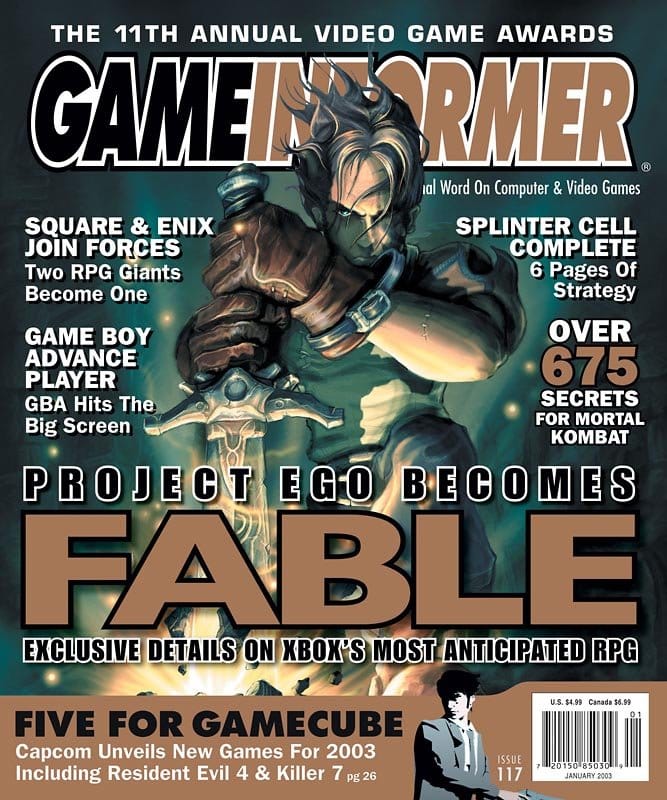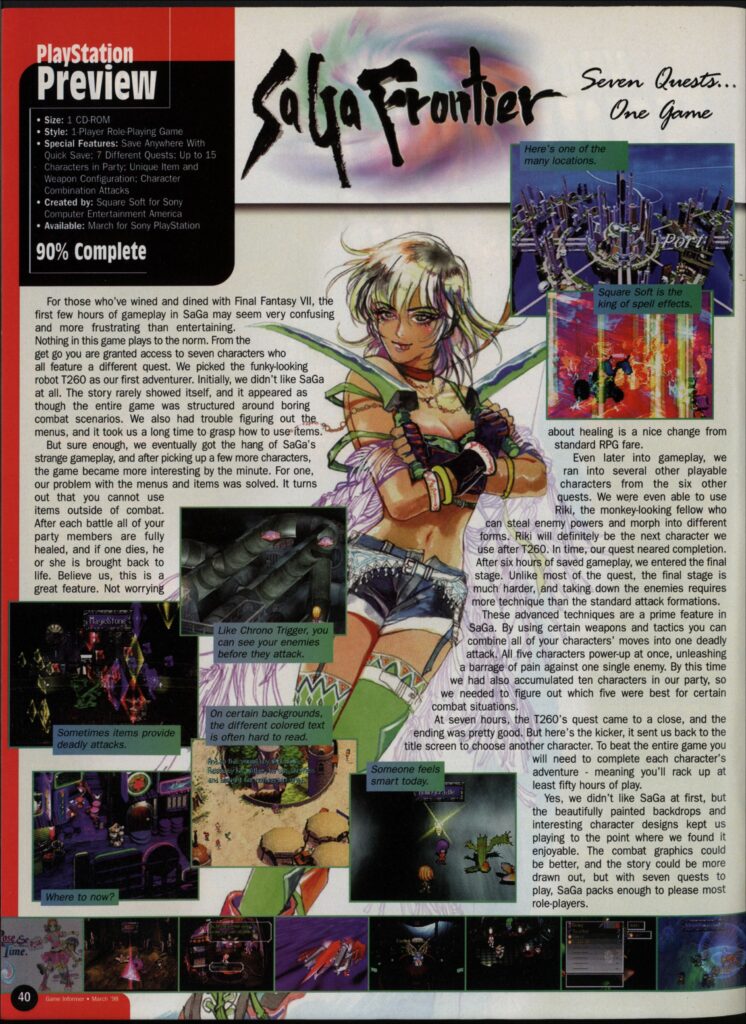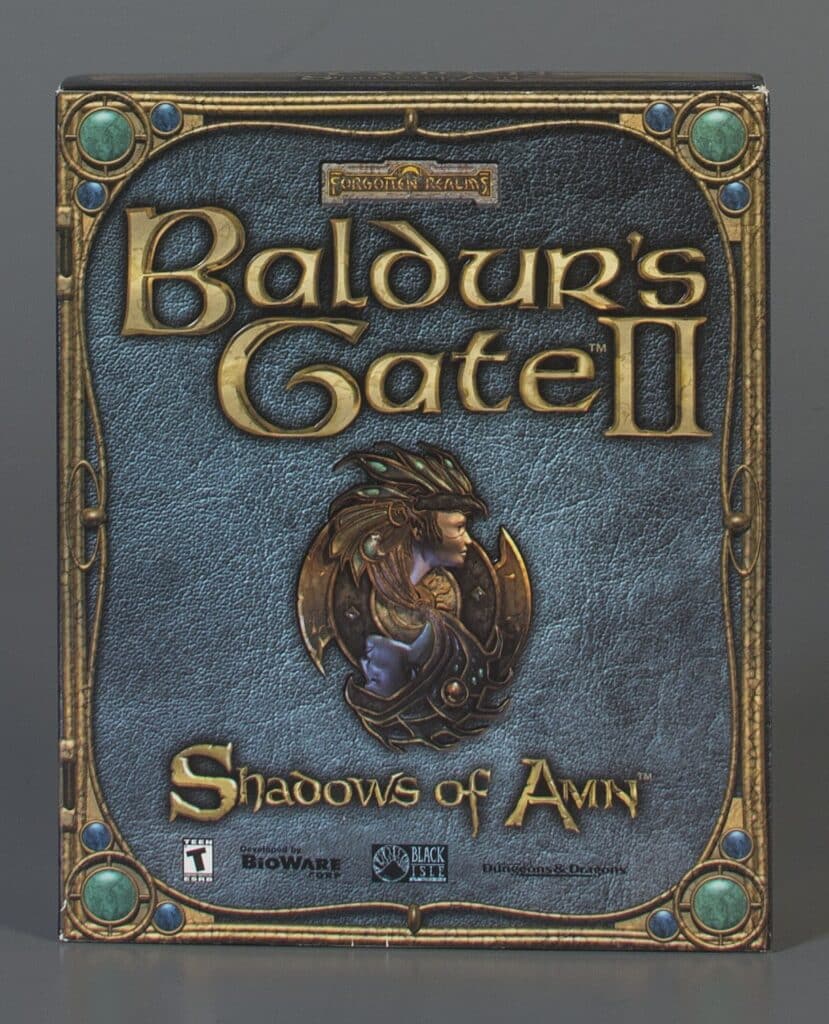From Dungeons & Dragons (1974) to Elden Ring (2023), modern games have asked us time and again to crack our knuckles, dust off our wizard cloaks, and test our magical mettle against fantasy’s most fearsome foes. But for all the magic our in-game spellbooks may contain, it was the pages of video game magazines that had the power to skyrocket an obscure game to national acclaim—or rain financial ruin upon a decorated studio for its latest flop. But how did the earliest journalists of the video game industry talk about on-screen magic, if and when they talked about magic at all?

Starting in August 1991, the monthly “game mag” Game Informer occupied an enduring and vaunted place in the pantheon of American periodicals. In the early 2010s, it sold more copies than its mainstream competitors, Time and Sports Illustrated. As a magazine with particularly strong historical ties to American retailers—first FuncoLand and later the retail giant and indoor mall staple GameStop—Game Informer certainly had the power to sway in-store customers to pick one cart (short for “cartridge”) over another. Yet after 33 years in circulation, Game Informer emptied its bullpen and shuttered its doors in August 2024.
In the early days of Game Informer, there weren’t more than a handful of fantasy games in the American console market, but steadily, more and more Japanese roleplaying games (JRPGs) were localized for the Super Nintendo and later the PlayStation and Sega Saturn, bringing with them a fresh take on Western fantasy, thanks in large part to the cult popularity of the Wizardry and Ultima computer games among Japanese designers. The editors at Game Informer—a generally young and scrappy bunch—seemingly couldn’t have been more enthused to get their hands on these generally well-reviewed JRPGs and later the American games they had inspired. Looking at the first decade of Game Informer’s run (from 1992 to 2002) in the Brian Sutton-Smith Library and Archive of Play, a few themes emerge in how the reviewers talked about magic in the video games of the day.

In the 1990s, magic systems based on the four cardinal elements—air, earth, fire, and water—were all the rage. And why wouldn’t they be? Throwing around lightning bolts and fireballs had been a staple of fantasy gaming since 1971 (check out Gary Gygax and Jeff Perren’s Chainmail, if you don’t believe me). The elements never really went away (the staggering success of elementally-themed games today like Genshin Impact being a testament to that), but Game Informer praised earlier titles like Final Fantasy III (1994) and Shining Wisdom (1996) for their innovative takes on the tried and true formula. Most elemental spells were about finding new flavors to hurt the bad guys, but the visuals of it all seemed to be just as important. Reviewers often praised games for their dazzling spectacles. In a preview for the 1998 title SaGa Frontier, the editors declared boldly in one screenshot caption, “[Developer] Square Soft is the king of spell effects.” Often the spells were also an opportunity to showcase the latest tech in graphical fidelity, with developers like Black Isle Studios showing off “new 3D accelerated spell effects” and Origins promising “a new particle system” for the spells of its 2001 Third Dawn expansion to Ultima Online. That said, looks weren’t everything. Despite the spells’ “cool effects” being the “graphical highlight” of the 2002 Xbox game NightCaster, it still received only a 5.5 out of 10.

And when it came to numbers, reviewer scores weren’t the only ones (or 1s) that mattered. As far as magic was concerned, more was more and bigger was better. Y2K was an especially grand year in this sense: GameCube’s Eternal Darkness: Sanity’s Requiem (2000) boasted 120 spells, PlayStation’s Breath of Fire (2000) countered with its own 200 spells, and the PC’s Shadows of Amn expansion for Baldur’s Gate II (2000) brought the total number in the base game up to a whopping 300 spells altogether. All those games just so happened to be highly-rated to boot. But what accounts for all this maximalism? Why was it so important to make the spellcasting jaw-droppingly gorgeous and, really, how many spells could one player possibly need?
Game Informer reviewers were not shy to derisively call out when a game “would have looked good five years ago,” so developers and publishers may have felt the pressure to keep pushing the limits of what the machines of the time could handle. But console systems and most commercial PCs could only go so far and, ultimately, it might have been a compromise between a company’s ambition, the available technology, and scarcity of man-hours that resulted in such a paradoxically maximalist philosophy. Within the context of a video game’s underlying design, each individual spell can only have a finite number of possible interactions, since each interaction represents a potentially complicated and game-breaking cascade of subsequent alterations to the game state. Complex, “deep” design like that is the kind of thing that takes a lot of time, money, and programming to suss out. So, it was likely often a safer design choice to A) keep the effects of each spell limited in scope to prevent any headache-inducing chain reactions, and B) simply add more of them to make up for the lack of depth. By relying instead on number and scale, designers could give the game an appearance of fullness with fewer associated risks. A small blast radius in the game’s underlying design meant that the blast radius of the player’s on-screen fireball could be however big (and beautiful) it needed to be.
None of this is to say that Game Informer cared deeply about magic. In many reviews of fantasy games, spells and magic systems were never mentioned at all since reviewers needed to address other elements of the game that were either severely lacking or notably praiseworthy. Nor is this to say that game magazines like Game Informer and its contemporaries Electronic Gaming Monthly and GamePro dictated the design decisions of Japanese and American video game developers. Still, a discursive analysis of Game Informer’s reviews some twenty-plus years later gives us a few clues about the past. If nothing else, we can achieve a general sense of what reviewers responded positively and negatively to in the video game market of the day, and we can see just how these companies maneuvered around those attitudes—consciously or otherwise—in the making of bigger and better games.
Besides, everyone knows that the real magic was the cheat codes in the back all along.
Written by Mikael Sebag, 2024 Valentine-Cosman Research Fellow


